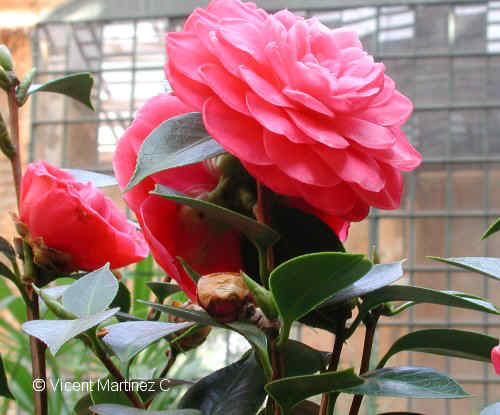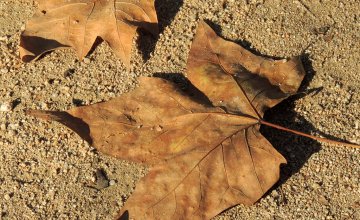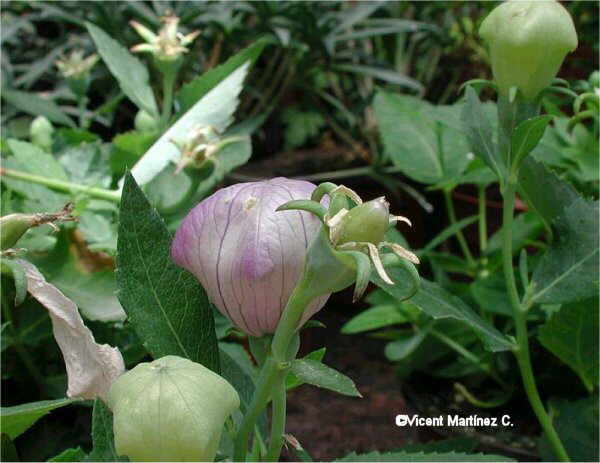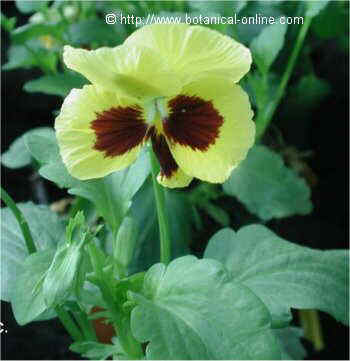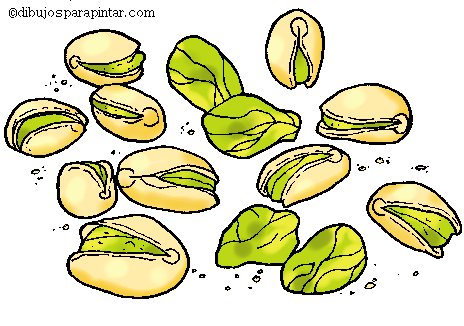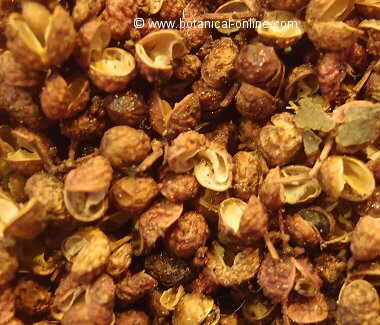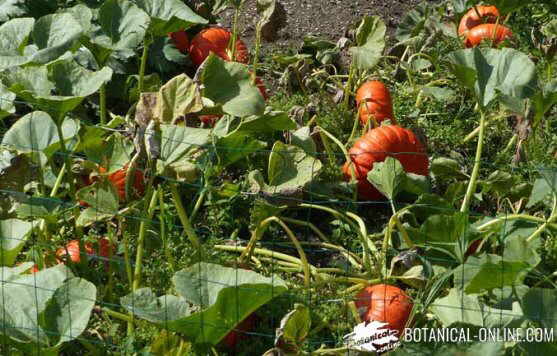Contents
- 1 CHICKPEA CHARACTERISTICS
- 1.1 What is a chickpea?
- 1.2 Description of chickpea
- 1.3 Species of peas
- 1.4 Varieties of peas
- 1.5 Origin of chickpeas
- 1.6 History of chickpea
- 1.7 Importance of chickpeas in the world
- 1.8 Uses of chickpeas
- 1.9 Chickpea classification
- 1.10 Are peas vegetables or legumes?
- 1.11 Production, consumption and exportation of chickpeas in the world
CHICKPEA CHARACTERISTICS
What is a chickpea?
The chickpea, also called garbanzo bean, Bengal gram or chana (Cicer arietinum L.) is a plant of the papilionaceous family, in which there are trees as well known as carob tree or herbs such as clover.
Chick pea is another species of papilionaceous plant used as an edible plant because of the nutritional value of seeds enclosed in its pods.
Description of chickpea
The pea plant is an annual sticky herb till 1.64 feet tall. Stems slender, pubescent and branchy. Leaves compound, provided with 3 to 8 pairs of leaflets oval, toothed, with a terminal leaflet.
Flowers white, pink or purple, solitary in leaf axils.
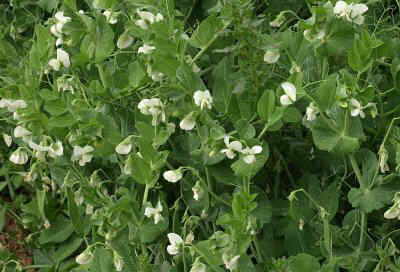
Chickpea with white flowers. They can also be pink or purple
Its fruit is a pod, 2 to 3 cm cm in length within which 1 or 2 seeds, known as chickpeas. They are rounded, edible, dry fruits.
It is a plant cultivated in many parts of the world that can also be feral
The species name “arietinum” comes from Latin meaning “ram’s head” by the similarity the seed of the variety kalubi has with the head of this animal. It is believed that the genus name “Cicer” comes from the term Gothic “arwaits”.
Species of peas
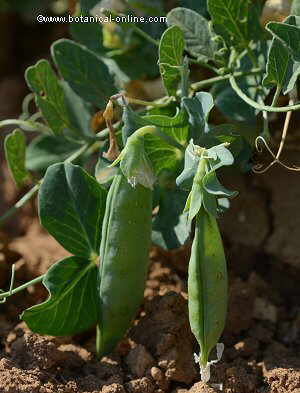
A detail of two fruits of a chick pea
There is only one species of the genus Pisum. Among the most known subspecies are:
- Pisum sativum subsp. sativum: Of white or pink flowers on short peduncles. It is the one that is cultivated more frequently. The seeds may be smooth or rough.
- Pisum sativum subsp. elatius: With longer floral peduncles and flowers with dark purple wings and lilac banner. It is cultivated less than the previous species and appears wild more frequently.
- Pisum sativum L. cv. axiphium: Commonly called as tirabeque, it is characterized by having a very tender pod that allows to eat it like a vegetble vegetable
Varieties of peas
*According to its size:
- Dwarf varieties: Are those that do not exceed 45 cm in height and do not require a tutor to support themselves. Within this category we have varieties as well known as the “aureola” or “negret”.
- Climbing varieties : These are those that can reach up to two meters in height. They need some support or tutor to be able to climb. Within the same there are species considered high and others considered socks. Medium varieties wellknown aare “Asterix” or “Lincoln”.
* According to the date when they are planted:
- Early varieties: They are those that are sown in October and produce fruits throughout the winter because they are able to withstand cold temperatures. Early varieties are, for example, “Froger” or “Frimas”
- Late varieties: are those that are sown in spring
* According to the characteristics of the fruit:
- Varieties of smooth fruit, such as the variety known as “volunteer”.
- Varieties of rough fruit, like the variety called “television”.
* According to the color of the fruits:
- Light green colors, intended to be used in preserved form.
- Dark green colors, intended to be eaten directly fresh or frozen.
Origin of chickpeas
It is unclear the true origin of chickpeas though some historians place it in the Middle East (From South-East Turkey to northern Syria), where it was believed to be gathered together with other wild cereals such as oats and wheat or other legumes such as lentils or peas.
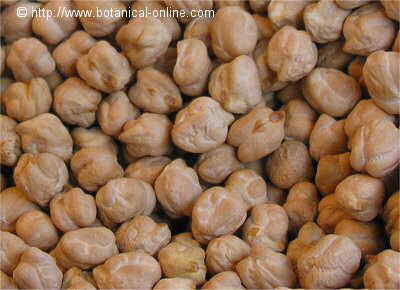
Photo of dry chickpea seeds
History of chickpea
No one knows exactly when it was started to be grown. It seems that people of the mentioned places grew it more than 10. 000 years.
From The Middle East, chickpea cultivation spread throughout the Mediterranean, Asia and India, especially under the influence of Phoenician merchant sailors, a culture whose influence is not only documented along the shores of the Mediterranean Sea, but their expeditions seem to have reached Africa and America.
Chickpeas were widely used by the Egyptians who considered it a staple food, along with beans, lentils and wheat. Their richness in carbohydrates provided energy to the workers building the pyramids. Chickpeas were also considered a luxury food for the more privileged classes in Egypt.
Greeks and Romans used them later. The use of the chickpeas in Hellenic civilization was manifested mainly in the form of bread when this vegetable was ground together with other cereals to make loaves or cakes.
Cooked or fried, they were very famous in the Roman Empire. Fried chickpeas were known as “Kikos,” according to the Latin poet Horace, a name meaning “Strength” and referring to the ability of this legume to provide energy to people who ate them.
The famous politician, philosopher and Roman writer Cicero (106 BC – 43 BC) takes its name “Cicero” from chickpea plant (“Cicer is the Latin word for” pea “). It is not certainly known whether this was due to the fact that his family was a major producer of chickpeas or because of his ancestors had become famous for having a Cicer, that’s to say a wart, on the nose, because in Latin ” cicer” had the double meaning of “chickpea and wart. ”
At the time of American colonization, chickpea was exported to Central and South America, where it is known mainly as “chicharo” and which has always had a great reputation for food.
Importance of chickpeas in the world
Besides being very important in South America, chickpeas are one of the key ingredients of the cuisine in India, where they are used for making flour and cakes or as an ingredient of Dal dishes made with vegetables without skin.
Chickpeas are equally important within the kitchen of North Africa and Middle East, especially in countries like Morocco, Algeria, Israel, Syria, Lebanon, Palestine, etc. There, they are known as “hummus” and many dishes are made with this legume. Among all the preparation, we can eat as interesting dishes as “wa tahina Hummus” a kind of mashed chickpeas which are mixed with ground sesame seeds and lemon juice.
However, in Europe, except Greece and Cyprus, as it has been happening with lentils, chickpeas lost their fame in favour of peas, and were relegated to a type of food typically used by the poor or during times of scarcity. Eating chickpeas on this continent for many years has meant eating a food intended for the table of the poor.
Today they are mainly grown in the Mediterranean, Central Asia, India, Central and South America.
Uses of chickpeas
Chickpeas can be used for the following purposes:
- Food for people: Basically chickpeas are grown for the food properties of their fruits, since they are rich in proteins (see “Edible properties of chickpea” in the listing below).
- Food for animals, especially in developing countries. The fruits are crushed directly for fodder; the plant, dry or fresh, as forage.
- Industry: It has many applications. For example: rubber for the plywood industry, indigo-like dyes obtained from its leaves, starch used in the manufacture of the textile industry that provides body to wool, silk or cotton, etc.
- As a healing remedy: In Ayurveda chickpeas are one of the main remedies for the cure of many diseases (More information on “Medicinal properties of chickpea” in the listing below)
Chickpea classification
We have three main groups of chickpeas into which we can include most of the varieties that we have today:
- Kalubi group: It is the group known as “ram’s head.” Most of today chickpeas are included within this group. They are varieties mainly grown in Europe, Central and South America. It corresponds to the first chickpea cultivated across the Mediterranean.
They are cream-colored varieties, medium to large, rounded and with well-marked wrinkles. Within this group we have some chickpeas as well known as:
- Castilian chickpea: Characterized by its prominent curved beak. It’s a little chickpea, considered little nutritious and little tasty, hence its price is low. Its shape is very varied as it has been abundantly planted without achieving standardization. It is grown mainly in central Spain, Extremadura and Andalusia. It is the variety from which the Mexican chickpeas derive.
- Pedrosillano chickpea: Small in size, and consequently with a very low price, but richer in protein and more flavorful than Castilian. It is grown mainly in Castilla-La Mancha and Castilla-Leon.
- Milky white chickpea: Unlike the Castilian, it is considered very nutritious and good. It is elongated and flattened on the sides, with its surface full of wrinkles. It is one of the most expensive on the market. Noted for its richness in protein (over 70%), magnesium and iron.
- Venous Andalusian chickpea: With much protein (over 73%), it stands out for its large size and smooth surface where there are a series of lines in the form of veins which give it its particular name. It is especially abundant in the Spanish province of Granada.
- Chamad chickpea: Distinguished by the curvature of its beak. Good size and very nutritious. Rich in proteins (More than 73%). It’s especially cultivated in the Spanish province of Granada.
- Desi group: A group comprising the Indian varieties and those grown in semi-arid tropical regions. It began to be cultivated about 5000 years ago in these regions, although at present we can find also grown in Europe and America. Seeds in this group are typically very angular, small, yellow or black.
- Gulabi group: A group containing varieties whose size is framed between Kalubi and Desi. They have smooth, rounded, more like a pea.
Are peas vegetables or legumes?
From the scientific point of view, the fruit of the pea is a legume, because, like the other plants of the same family ), they produce fruits enclosed in pods that are known botanically as legumes (See types of fruits)
From a food point of view, peas can be considered as a vegetable . The pods that contain the seeds should be considered vegetables because they have similar food properties to the rest of the vegetables (lots of water, lots of fiber, few calories …)
Seeds enclosed within the pods (pulses) should be considered legumes because their properties are similar to the rest of the legumes (little water, many hydrates, many proteins …)
Since the seeds or pulses of the peas are eaten when they are immature, that is green and tender, many people think that they are eating vegetables, although in fact they are legumes, similar in their properties to other legumes like, for example, chickpeas or lentils
Production, consumption and exportation of chickpeas in the world
There are about 10 million hectares of land in the world for growing chickpeas. India has about 7 million.
According to FAO, world production of chickpea in 2004 was about eight and a half million tons. The main producers of chickpeas in the world are, in order of production, India and Pakistan. They own 90% of world production of this legume. India is the largest country by far since it has from 55 to 70% of the whole production
These two countries are followed by other countries with much smaller productions such as Iran, Turkey, Syria, etc.. South America’s largest producers are Argentina, Chile and Colombia. In Europe the main producers are Spain, Italy and Portugal.
Although India is the world’s largest producer, its production is devoted almost exclusively for domestic consumption, thus being the main consumer of the world. In fact, although India exports large quantities of chickpeas, especially to the United States and Canada, its level of imports exceeds the amount exported. (In 2003 they imported more than 250. 000 tones and exported only about 2900 tons.
Major exporting countries of the world are, in order of importance: Australia (24%), Mexico (20%), Turkey (15%), Canada (13%), Iran (10%) and United States (3%)
![]() More information on chickpeas.
More information on chickpeas.

